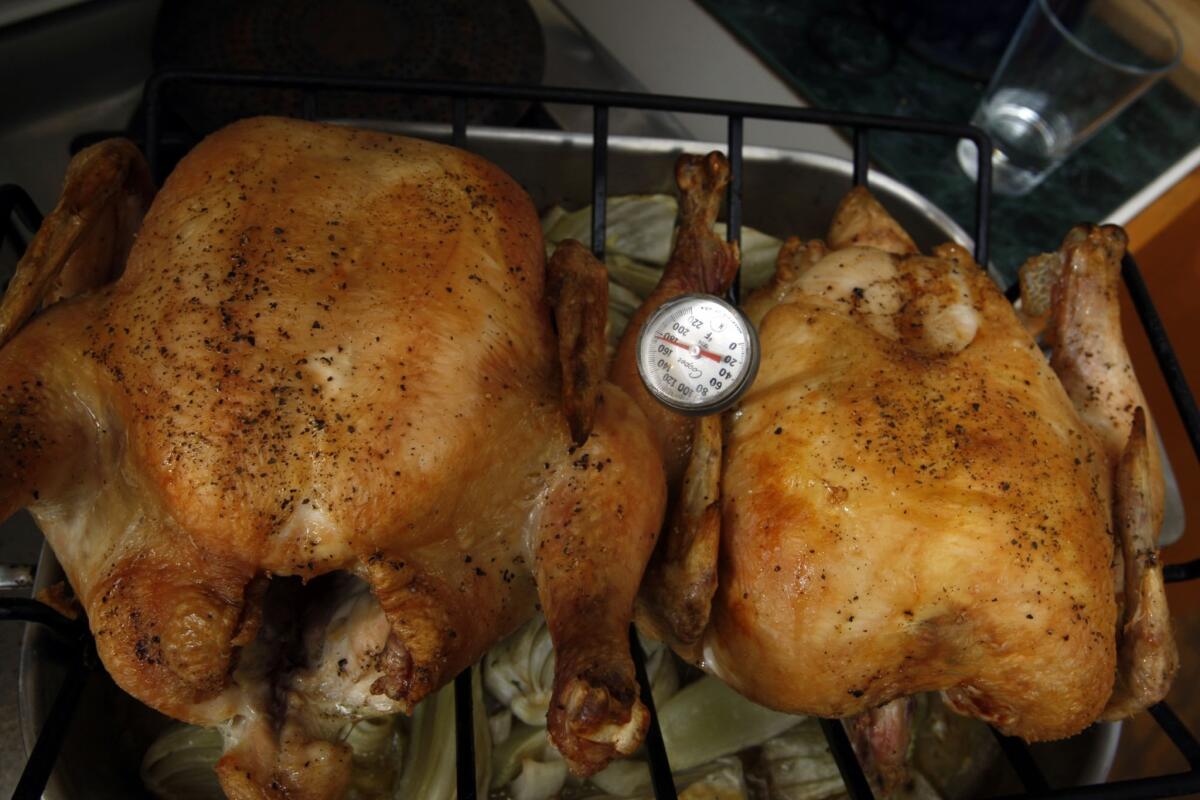Is your chicken making you sick? New study emphasizes washing hands, using thermometer

Most people may claim they’re aware of the proper, safe way to handle raw poultry, but how many actually observe recommended practices when cooking in their own homes?
A new study led by UC Davis Center for Consumer Research Director Christine Bruhn shows the number may be a lower than you think.
Researchers analyzed video footage of 120 participants from Los Angeles, San Francisco, Seattle and Portland, Ore., in their kitchens preparing a chicken dish and salad of their choosing. The majority of the participants claimed to cook chicken weekly and some had even received formal food safety training. Bruhn included salad in the study to be able to look at cross-contamination of bacteria, and also emphasized using video, rather than a traditional questionnaire, to gather her data.
“It’s become quite common knowledge that we overstate our compliance to recommendations,” said Bruhn. “But if you’ve got videotape and a timer you can see exactly what’s going on.”
Researchers found that 65% of participants did not wash their hands before they started cooking and 38% did not wash their hands after touching raw chicken. Out of those who did wash their hands, only 10% washed them for the recommended 20 seconds. And a third of those who washed didn’t use soap.
“People touched chicken then opened the fridge, touched the door to go outside, rubbed their face and picked up their phone,” said Bruhn.
The study also found that almost 50% of participants washed their chicken before preparing, a practice the U.S. Department of Agriculture says can cause bacteria to spread over multiple surfaces.
When it came to actually cooking the chicken, 40% undercooked the chicken, regardless of preparation method and 29% were aware of the 165 degrees recommended cooking temperature by the USDA.
“I expected people to not wash their hands, but what surprised us was that people were undercooking their chicken,” said Bruhn. “We asked them how they could tell if it was done and most responded by saying they cut it open, look at the color, if it’s not pink, if the juices are clear.”
Most admitted to using the chicken’s appearance as a measure for when it was done, but during the study 40% of the “cooked” chicken was found to be below 165 degrees. The most instances of undercooked chicken occurred when it was grilled, followed by frying. The fewest instances of undercooked chicken occurred when it was oven-roasted.
The study also looked at the temperature of the participants’ refrigerators. The ideal temperature is 40 degrees or less. One participant had a fridge that read 60 degrees.
The study was funded by Foster Farms, which according Bruhn, has been looking for ways to reduce levels of salmonella after the company was linked to cases of salmonella last year.
“They were very concerned, but they also noted that it’s a shared responsibility,” said Bruhn, who was approached to do the study after having done a similar study involving burgers.
Based on the findings, Foster Farms, UC Davis, the Partnership for Food Safety Education and more food- and agriculture-related groups are launching an educational campaign to increase consumer knowledge of safe food preparation practices.
“Keep it cold, wash your hands and use a thermometer,” said Bruhn.
More to Read
Eat your way across L.A.
Get our weekly Tasting Notes newsletter for reviews, news and more.
You may occasionally receive promotional content from the Los Angeles Times.








